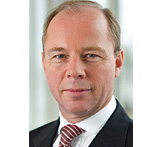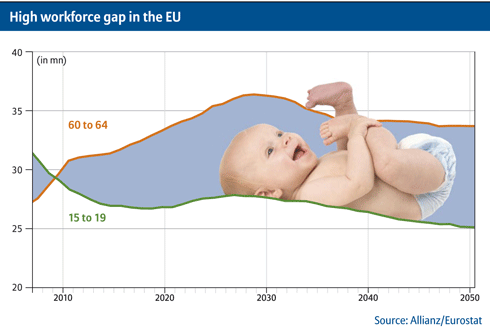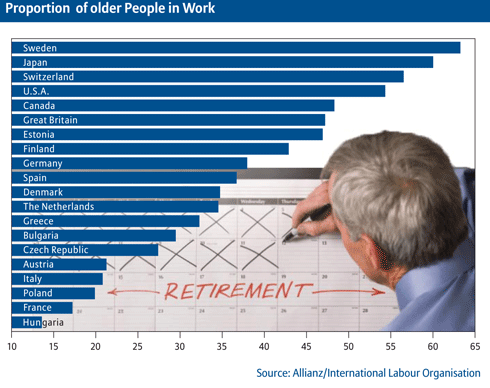The ongoing demographic change has reached the labor market. A recent study conducted by Allianz shows that in 2010 for the first time the number of people aged between 60 and 65 will significantly outstrip the number of new entrants on the job market in the European Union. Currently, the EU is home to approximately 28.6 million people ages 15 and 20. And 28.8 million EU residents are between 60 and 65 years of age. This means that the number of people approaching or entering retirement will be around 200,000 greater than the number of school-leavers this year. "As the baby boomer generation moves into retirement, this gap is set to widen over the next few years, rising to 8.3 million by 2030," explains Professor Michael Heise, chief economist and head of corporate development at Allianz.
It's down to the "oldies" now
Downloads


Gap between persons aged 60 to 64 and school leavers between 15 and 20

Labor force participation rates of 60 to 64 years old persons (in percent)
Increasing the proportion of older people in work
Currently, only around a third of all people between the ages of 60 and 64 in the EU are still working. In this respect, however, there are significant differences between the individual countries. At the lower end of the scale is Hungary with an employment rate of just 13.3 percent for 60- to 64-years-olds, while Sweden leads the field with 63 percent of this age group still working. If the rest of Europe were able to catch up with Sweden, more than 8 million additional workers would be available by 2030.
Increasing the proportion of older people working is therefore the challenge facing labor market policy in the future. "The key milestones have already been achieved in pursuit of this objective in recent years, with moves to reduce the number of early retirement incentives being introduced as part of pension system reforms in many EU countries. The task now is to create the right environment on the labor market. If the European Union succeeds in this endeavor, it could serve as a role model in the face of an aging population worldwide," says Heise.